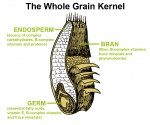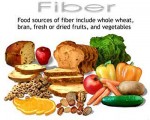 Addictive eating behavior and substance dependence have similar patterns of brain activity, finds a new study from the Rudd Center for Food Policy and Obesity at Yale. The study is published in the Archives of General Psychiatry and is the first to link symptoms of addictive eating behavior with specific patterns of brain activity in both obese and lean individuals.
Addictive eating behavior and substance dependence have similar patterns of brain activity, finds a new study from the Rudd Center for Food Policy and Obesity at Yale. The study is published in the Archives of General Psychiatry and is the first to link symptoms of addictive eating behavior with specific patterns of brain activity in both obese and lean individuals.
Previous research has identified similar patterns of brain activity in obese and substance-dependent people, which has led to the theory that some people may be addicted to high-calorie foods, but no previous studies have explored whether lean as well as obese individuals who exhibit symptoms of addictive eating behavior have neural responses similar to those of drug addicts.
In the current study, 48 healthy adolescent women ranging from lean to obese completed the Yale Food Addiction Scale (YFAS), which applies the diagnostic criteria for substance dependence to eating behavior. Next, using brain-imaging procedures such as functional magnetic resonance imaging (fMRI), the study examined the relation of food addiction symptoms, as assessed by the YFAS, with the women’s brain activity in response to food-related tasks. The first task looked at how the brain responded to cues signaling the impending delivery of a highly palatable food (chocolate milkshake) versus cues signaling the impending delivery of a tasteless control solution. The second test looked at brain activity during the actual intake of the chocolate milkshake versus the tasteless solution.
Both lean and obese participants with higher food addiction scores showed different brain activity patterns than those with lower food addiction scores. In response to the anticipated receipt of food, participants with higher food addiction scores showed greater activity in parts of the brain responsible for cravings and the motivation to eat, but less activity in the regions responsible for inhibiting urges such as the desire to drink a milkshake. Thus, similar to drug addicts, individuals exhibiting signs of food addiction may struggle with increased cravings and stronger motivations to eat in response to food cues and may feel more out-of-control when eating highly palatable foods.
According to Ashley Gearhardt, clinical psychology doctoral student at Yale University and lead author, “The findings of this study support the theory that compulsive eating may be driven in part by an enhanced anticipation of food rewards and that addicted individuals are more likely to be physiologically, psychologically, and behaviorally reactive to triggers such as advertising. The possibility that food-related cues may trigger pathological properties is of special concern in the current food environment where highly palatable foods are constantly available and heavily marketed.”
The authors assert that efforts to change the current food environment may be critical to successful weight loss and prevention efforts since food cues may take on motivational properties similar to drug cues. The current emphasis on personal responsibility as the reason for increasing obesity rates may have minimal effectiveness as palatable food consumption may be accompanied with a loss-of-control for individuals exhibiting signs of food addiction.
Source: Yale University

 We aren't sure how Bisphenol A (BPA) (found in plastic food containers) affects human beings — especially developing fetuses and young children — and if concerning test results in animal subjects translate to people. Should BPA be banned from baby bottles, as it has been in other countries like Canada? Unfortunately, our ability to detect chemicals in our bodies is running ahead of our ability to understand exactly how them may affect us.
We aren't sure how Bisphenol A (BPA) (found in plastic food containers) affects human beings — especially developing fetuses and young children — and if concerning test results in animal subjects translate to people. Should BPA be banned from baby bottles, as it has been in other countries like Canada? Unfortunately, our ability to detect chemicals in our bodies is running ahead of our ability to understand exactly how them may affect us. We all keep hearing that we need to eat more whole grains, but does everyone know what they are? It's pretty obvious they are NOT that swishy white bread that we used to make dough balls out of when we were kids (to use for bait while fishing!). Whole grains are cereal grains that consist of the intact, ground, cracked or flaked kernel, which includes the bran, the germ and the inner most part of the kernel (endosperm). Examples of whole grains include whole wheat, oatmeal, whole-grain cornmeal, brown rice, whole-grain barley, whole rye, and buckwheat.
We all keep hearing that we need to eat more whole grains, but does everyone know what they are? It's pretty obvious they are NOT that swishy white bread that we used to make dough balls out of when we were kids (to use for bait while fishing!). Whole grains are cereal grains that consist of the intact, ground, cracked or flaked kernel, which includes the bran, the germ and the inner most part of the kernel (endosperm). Examples of whole grains include whole wheat, oatmeal, whole-grain cornmeal, brown rice, whole-grain barley, whole rye, and buckwheat. About 3 percent of U.S. adolescents are affected by an eating disorder, but most do not receive treatment for their specific eating condition, according to an National Institute of Mental Health (NIMH)-funded study published online ahead of print March 7, 2011, in the Archives of General Psychiatry.
About 3 percent of U.S. adolescents are affected by an eating disorder, but most do not receive treatment for their specific eating condition, according to an National Institute of Mental Health (NIMH)-funded study published online ahead of print March 7, 2011, in the Archives of General Psychiatry. Chemicals and other substances that pollute the environment can also cause serious health problems in human reproductive health. There is increasing evidence that some toxic substances harm the body by disrupting the endocrine (hormone) system which regulates biological processes from conception to old age. Because a woman goes through several hormonally-influenced changes in her body across the lifespan (in-utero, puberty, pregnancy, menopause) she is at greater risk of experiencing reproductive problems including impaired fertility, miscarriage, preeclampsia, preterm delivery, menstrual irregularities, polycystic ovarian syndrome, uterine fibroids, endometriosis, breast cancer and early menopause. To learn more about this topic, download the free April e-newsletter called,
Chemicals and other substances that pollute the environment can also cause serious health problems in human reproductive health. There is increasing evidence that some toxic substances harm the body by disrupting the endocrine (hormone) system which regulates biological processes from conception to old age. Because a woman goes through several hormonally-influenced changes in her body across the lifespan (in-utero, puberty, pregnancy, menopause) she is at greater risk of experiencing reproductive problems including impaired fertility, miscarriage, preeclampsia, preterm delivery, menstrual irregularities, polycystic ovarian syndrome, uterine fibroids, endometriosis, breast cancer and early menopause. To learn more about this topic, download the free April e-newsletter called,  High-fiber diets during early adult years may lower lifetime cardiovascular disease risk
High-fiber diets during early adult years may lower lifetime cardiovascular disease risk Women who tend to have high blood pressure (HBP) should be particularly vigilant if they are on oral contraceptives, are pregnant, or on hormone replacement therapy.
Women who tend to have high blood pressure (HBP) should be particularly vigilant if they are on oral contraceptives, are pregnant, or on hormone replacement therapy. The results of the first study to examine the relationship between menopausal symptoms and breast cancer risk are available online ahead of the February print issue of
The results of the first study to examine the relationship between menopausal symptoms and breast cancer risk are available online ahead of the February print issue of